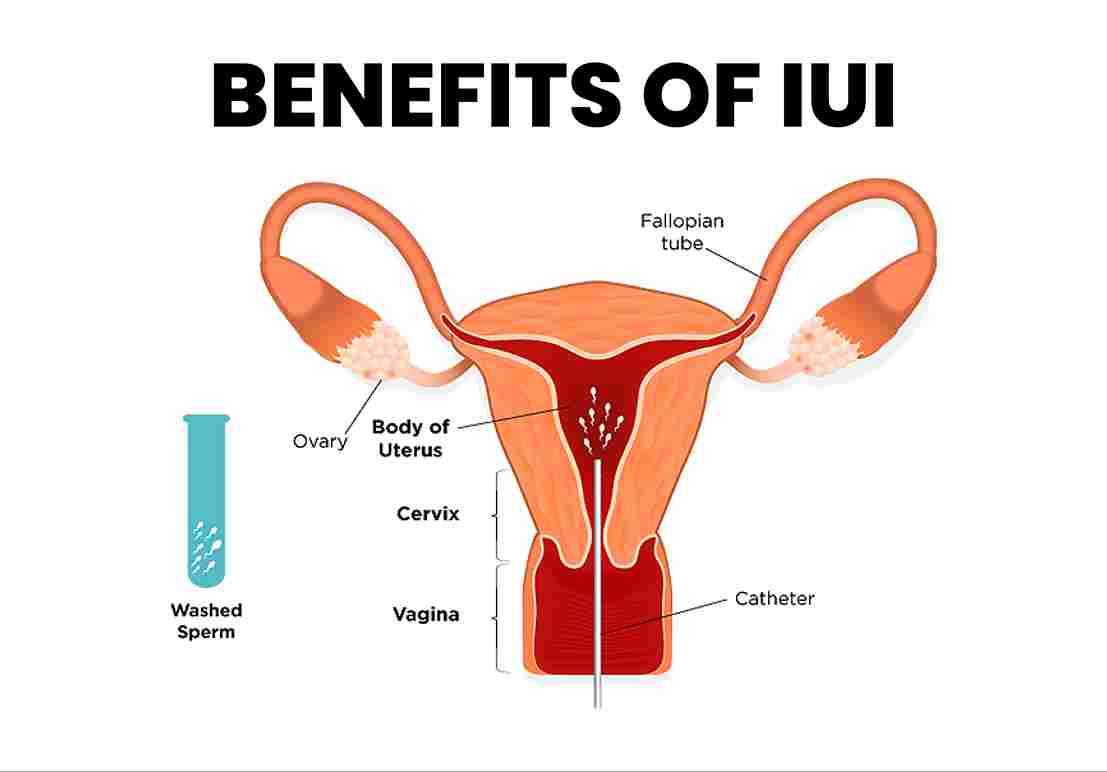Intrauterine insemination (IUI) is a fertility treatment that involves placing sperm directly into the uterus to increase the chances of conception. This procedure is often used by couples who have difficulty conceiving naturally. In this article, we will discuss the key concepts and information related to IUI, including the benefits, procedure, success rates, cost, and risks.
IUI is done on which day?
Intrauterine insemination (IUI) is typically done around the time of ovulation, which is usually between day 12 and 16 of a woman's menstrual cycle, although this can vary depending on the individual's menstrual cycle and fertility treatment plan. Your healthcare provider will advise you on the optimal timing for your IUI procedure based on your specific situation.
To know more visit www.doctorsapp.in
The IUI treatment process involves the following steps: Step 1: Ovulation Induction The first step in the IUI process involves ovulation induction. This may involve taking medications to stimulate the ovaries to produce more eggs or to time ovulation. Your doctor will monitor you throughout this process to ensure that your ovaries are responding to the medications and that the eggs are developing properly. Step 2: Semen Collection and Processing On the day of the IUI procedure, the male partner will be asked to provide a semen sample. This sample will be washed and processed in the laboratory to concentrate the healthy and motile sperm, and to remove any non-motile or non-viable sperm. Step 3: Insemination process Once the semen sample is ready, the IUI procedure will take place. The woman will lie down on an examination table, and a speculum will be inserted into the vagina to keep it open. A catheter will be inserted into the uterus through the cervix, and the processed sperm will be injected directly into the uterus. This process is typically painless and takes only a few minutes. Step 4: Recovery After the IUI procedure is complete, the woman will rest for a short period of time before being allowed to go home. It is recommended to avoid vigorous activity and sexual intercourse for a few days following the procedure. Step 5: Pregnancy Test After about two weeks following the IUI procedure, a pregnancy test can be done to determine if the procedure was successful. This is IUI pregnancy.

The IUI treatment process involves the following steps: Step 1: Ovulation Induction The first step in the IUI process involves ovulation induction. This may involve taking medications to stimulate the ovaries to produce more eggs or to time ovulation. Your doctor will monitor you throughout this process to ensure that your ovaries are responding to the medications and that the eggs are developing properly. Step 2: Semen Collection and Processing On the day of the IUI procedure, the male partner will be asked to provide a semen sample. This sample will be washed and processed in the laboratory to concentrate the healthy and motile sperm, and to remove any non-motile or non-viable sperm. Step 3: Insemination process Once the semen sample is ready, the IUI procedure will take place. The woman will lie down on an examination table, and a speculum will be inserted into the vagina to keep it open. A catheter will be inserted into the uterus through the cervix, and the processed sperm will be injected directly into the uterus. This process is typically painless and takes only a few minutes. Step 4: Recovery After the IUI procedure is complete, the woman will rest for a short period of time before being allowed to go home. It is recommended to avoid vigorous activity and sexual intercourse for a few days following the procedure. Step 5: Pregnancy Test After about two weeks following the IUI procedure, a pregnancy test can be done to determine if the procedure was successful. This is IUI pregnancy.
Success rates of IUI: The success rates of IUI vary depending on several factors, including age, infertility diagnosis, and the number of cycles attempted. On average, the success rate of IUI is around 10-20% per cycle. Risks of IUI: IUI is generally a safe procedure, but there are some risks involved, such as: Multiple pregnancies: Ovulation induction medications can increase the chances of multiple pregnancies, which can lead to complications for both the mother and the babies. Infection: The IUI procedure can increase the risk of infection, although this is rare. Ectopic pregnancy: IUI increases the risk of ectopic pregnancy, where the fertilized egg implants outside the uterus.

Success rates of IUI:
The success rates of IUI vary depending on several factors, including age, infertility diagnosis, and the number of cycles attempted. On average, the success rate of IUI is around 10-20% per cycle.
Risks of IUI:
IUI is generally a safe procedure, but there are some risks involved, such as:
Multiple pregnancies: Ovulation induction medications can increase the chances of multiple pregnancies, which can lead to complications for both the mother and the babies.
Infection: The IUI procedure can increase the risk of infection, although this is rare.
Ectopic pregnancy: IUI increases the risk of ectopic pregnancy, where the fertilized egg implants outside the uterus.
The cost of IUI varies depending on the clinic, location, and specific treatment plan. On average, the cost of IUI can range from INR 5,000 to INR 25,000 per cycle.
Given below is the cost of IUI in different cities of India
All the prices are in INR.
Please Wait..